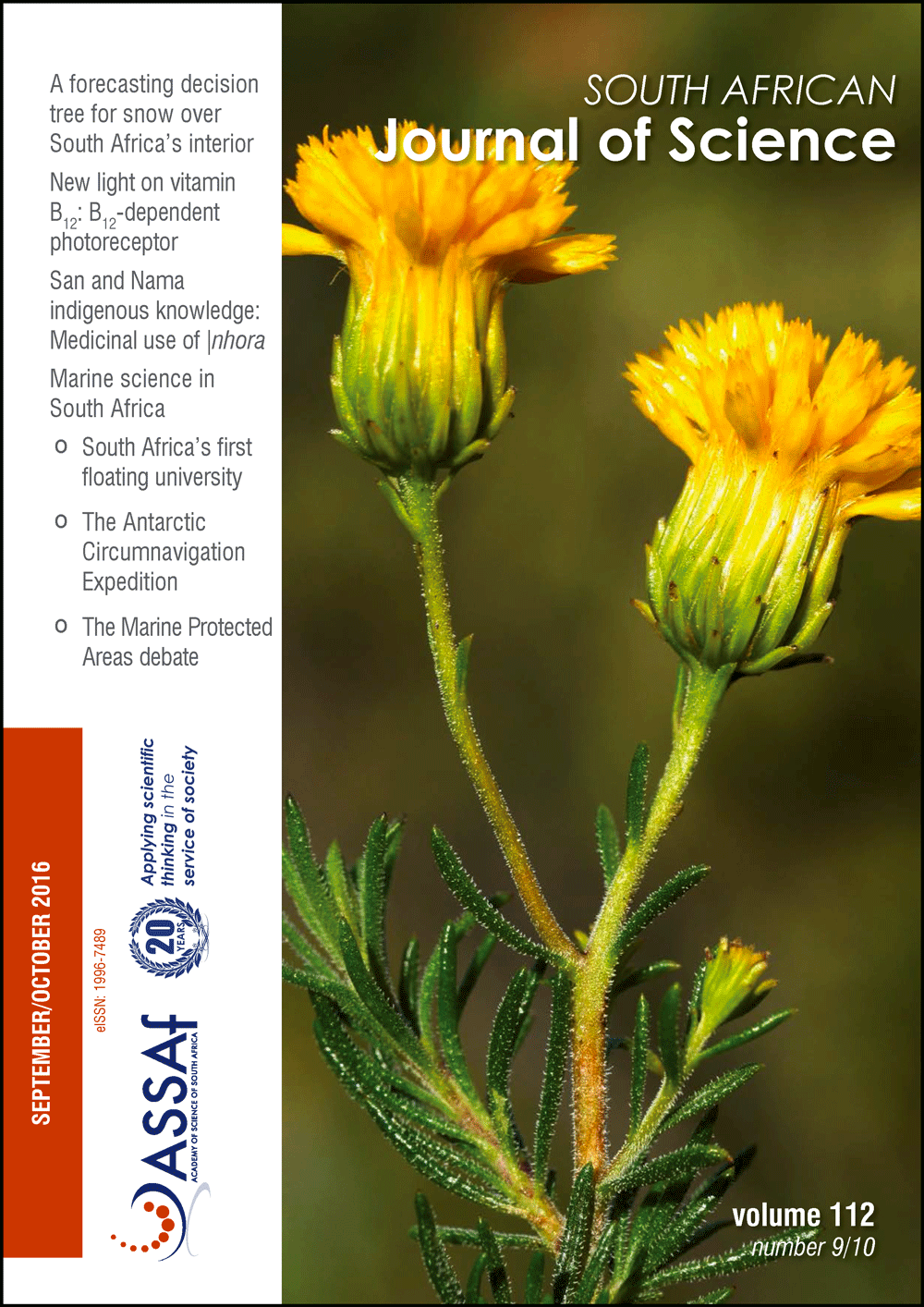Differential involvement of ascorbate and guaiacol peroxidases in soybean drought resistance
DOI:
https://doi.org/10.17159/sajs.2016/20160028Keywords:
antioxidative enzymes, drought stress, drought tolerance, maturity stageAbstract
Soybean (Glycine max L.) is a small but growing component of the agricultural economy of South Africa and is predicted to become a major crop in Africa because of its high protein content. Drought induction at flowering or early stages of pod development has detrimental effects on soybean yield. As antioxidative enzymes play a protective role in plants during various abiotic stress conditions, this study was conducted to investigate how ascorbate (Enzyme Commission (EC) number 1.11.1.1) and guaiacol (EC: 1.11.1.7) peroxidases are involved in soybean drought resistance at different maturity stages (flowering and pod development). We also investigated whether the levels of these enzymes decline with plant maturity. Three tolerant soybean genotypes (G1, G2, G3) and a susceptible genotype (G4*) were used. These cultivars were categorised according to their sensitivity to drought stress in previous studies. The activity of ascorbate peroxidase was significantly induced by drought stress at both growth stages with higher activity in the resistant than susceptible plants, strongly supporting the protective role of this enzyme against drought stress at both developmental stages. The guaiacol peroxidase activity was induced to higher levels in the resistant than in the susceptible plants at flowering only, with no significant increase observed at pod development stage, indicating its selective protective involvement against drought stress. Interestingly, the levels of these enzyme activities were induced in all cultivars at both developmental stages, irrespective of drought stress, indicating that their activities increased with maturity.
Significance:- Guaiacol peroxidase is selectively involved in soybean drought resistance at flowering stage.
- The upregulation of ascorbate peroxidase activity at both growth stages in drought-resistant cultivars suggests that this enzyme could be used as a biochemical marker of drought resistance in soybeans.
- In contrast to the literature, activities of both enzymes increased with maturity irrespective of whether the plant is drought susceptible or resistant.
Published
Issue
Section
License

All articles are published under a Creative Commons Attribution 4.0 International Licence
Copyright is retained by the authors. Readers are welcome to reproduce, share and adapt the content without permission provided the source is attributed.
Disclaimer: The publisher and editors accept no responsibility for statements made by the authors
How to Cite
- Abstract 606
- PDF 568
- EPUB 213
- XML 250












.png)